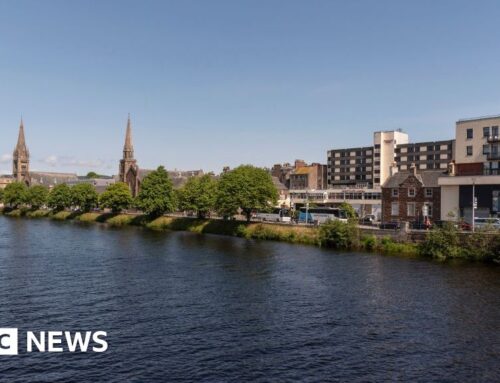Evanston’s Environment Board looked at how much progress the city has made on meeting the goals of the 2018 Climate Action and Resilience Plan (CARP ) Parks and Green Space Strategic Plan
CARP goals are technically the purview of one of the Environment Board subcommittees, the CARP Implementation Taskforce. But this was an issue several board members have wanted to look at for months, especially with discussion around the Envision Evanston comprehensive plan raising questions about whether those goals are even relevant seven years later. Overall, the report found that, while Evanston made some progress, it fell short in several ways.
As the name implies, the Parks and Green Spaces Strategic Plan will set priories for city-owned parks, recreational facilities and natural spaces. Because the meeting of the Evanston Park and Recreation Board
After some discussion, the board members decided to spend next week reviewing the version presented at the June 12 meeting and then share feedback with co-chair Katarina Topalev, who will compile them into a single document.
The Environment Board already used a similar process to come up with comments on various iterations of Envision Evanston. While board member OlinWilson-Thomas suggested using a GoogleDoc, Sustainability and Resilience Specialist Kirsten Drehobl Vega advised against it, saying that this approach might run afoul of the Open Meetings Act.
Progress on CARP goals Sustainability and Resilience Manager Cara Pratt was unable to attend most of the meeting due to the scheduling conflict, leaving Drehobl Vega to go over a memo the two city employees prepared together.
According to the memo, the goal of transitioning all municipal operations to 10% environmentally renewable electricity was mostly met “save for a few steetlight accounts.” The net zero greenhouse emissions policy has been adopted, but as Drehobl Vega noted, it might have to be redone in light of the Healthy Buildings Ordinance
When it comes to the goal of getting rid of single-use plastic, she said the city has banned single-use plastic bags, but not plastic takeout containers.
Drehobl Vega said the city believed it met the goal of planting 500 trees, but it doesn’t have the data to back it up yet.
Other goals are taking longer to meet. The goal of keeping at least 50% of all waste out of the landfill by 2025 is only halfway met. Evanston now diverts about 25% of all waste from the landfill, which, the memo says, is an improvement over 20% diversion in 2017. Drehobl Vega said that moving that goal to 2030 may be more realistic.
The goal of reducing the amount of greenhouse gas emissions Evanston-wide by 50% in 2025 is only partially met. As of 2022, the memo stated, the city reduced the emissions by 36%, 48% if one counts energy saved through EPA Renewable Energy Certificates
Measuring compliance One recurring issue Drehobl Vega flagged was that it wasn’t always easy, or obvious, to measure progress on the goals. For the goal of having “buses and fleets based and operating in Evanston [be] 50% electric” by 2025, the city has no way to track fleets such as CTA and Pace buses, U.S. Postal Service trucks; and Amazon delivery trucks. While Drehobl Vega didn’t mention it, Northwestern’s shuttle bus network
Topalev said her husband works at District 65, and he told her buying electric buses “is challenging for them.”
When it comes to the goal of replacing traditional lightbulbs with LED lights “for all lighting on city properties, street lights, and traffic lights,” Drehobl Vega said while the city knows for sure how many traffic lights were replaced, and they know which buildings had their lights completely replaced with LED lights, it’s harder for them to quantify how many lightbulbs were replaced in the buildings that have only been partially converted.
A similar issue came up when addressing the goal of the city having 75% renewable electricity supply by 2025. Drehobl Vega explained while the city could get data from its own community choice aggregation program that doesn’t capture residents and businesses that signed up for a third-party electric supplier on their own.
Topalev said the city should be mindful that increasing use of electric vehicles will increase electric consumption, saying she saw it reflected firsthand in her family’s electric bill.
The goal of “complet[ing] a feasibility study to determine the best opportunities for installation of renewable energy installations on municipal properties” was simply not met. And the city simply isn’t sure how to measure the success of the goal of “each resident reduces their carbon footprint by at least 10%.”
The Thursday meeting would have been the final meeting for Environment Board co-chair Michelle Redfield, whose term ended in June and who couldn’t be reappointed due to six-year term limits. Redfield didn’t attend and the board unanimously voted to appoint board member Paula Scholl, who chairs the Building Electrification Working Group subcommittee, as the new co-chair.
The Environmental Board also agreed to move its meetings from the second Thursday of the month to the fourth Thursday of the month. July through October meetings are set to take place in council chambers, while November and December meetings, which will be moved earlier due to holidays, will take place at the Evanston Public Library’s main library, in meeting room 107.
Related Stories

